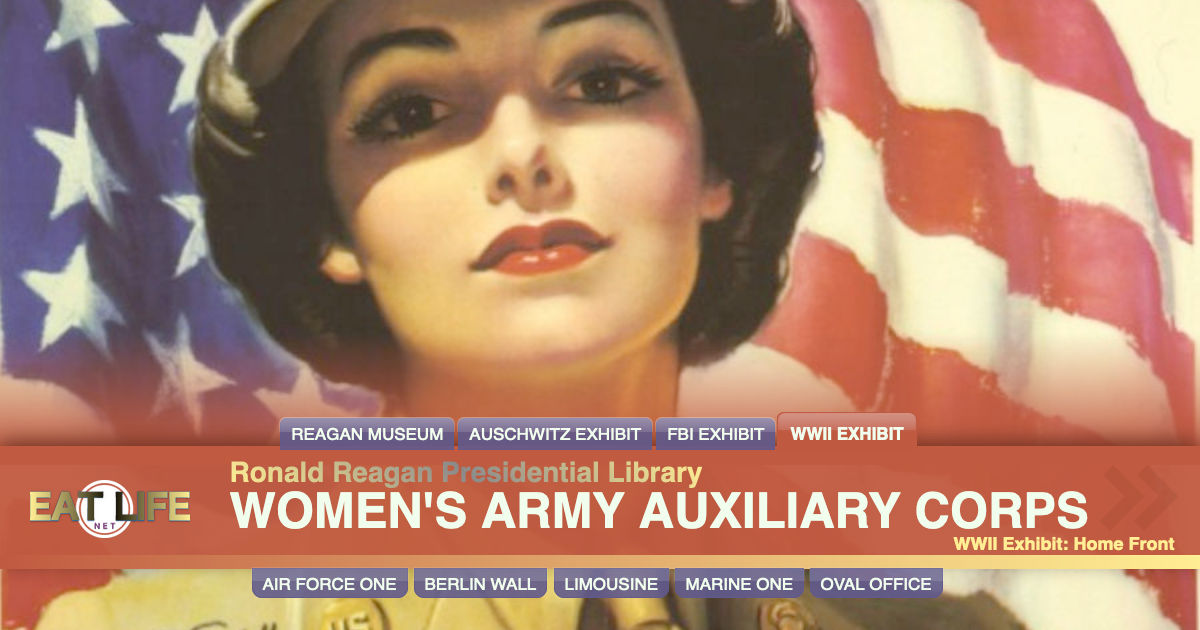The WAAC was established after Pearl Harbor and had spaces for clerks, typists, drivers, cooks and unit cadre. Women primarily worked in four fields: baking, clerical, driving, and medical. Over 400 jobs were open to women. In July 1943 they officially dropped the "auxiliary" status of the WAAC and allowed women to serve overseas to "free a man to fight." They became the Women's Army Corps (WAC). This gave women all of the rank, privileges, and benefits of their male counterparts.

Women's Army Auxiliary Corps
With war looming, U.S. Rep. Edith Nourse Rogers of Massachusetts introduced a bill for the creation of the Women's Army Auxiliary Corps in May 1941. Having been a witness to the status of women in World War I, Rogers vowed that if American women served in support of the Army, they would do so with all the rights and benefits afforded to Soldiers.
Spurred on by the attack on Pearl Harbor on Dec. 7, 1941, Congress approved the creation of WAAC on May 14, 1942. President Franklin D. Roosevelt signed the bill into law on May 15, and on May 16, Oveta Culp Hobby was sworn in as the first director. WAAC was established "for the purpose of making available to the national defense the knowledge, skill, and special training of women of the nation."
The first women arrived at the first WAAC Training Center at Fort Des Moines on July 20, 1942. Among them were 125 enlisted women and 440 officer candidates (40 of whom were black), who had been selected to attend the WAAC Officer Candidate School, or OCS. Their arrival and subsequent training brought considerable public interest surrounding civil rights, as this corps presented the biggest opportunity to test integration in the Army. After OCS, black officers and white officers were segregated.
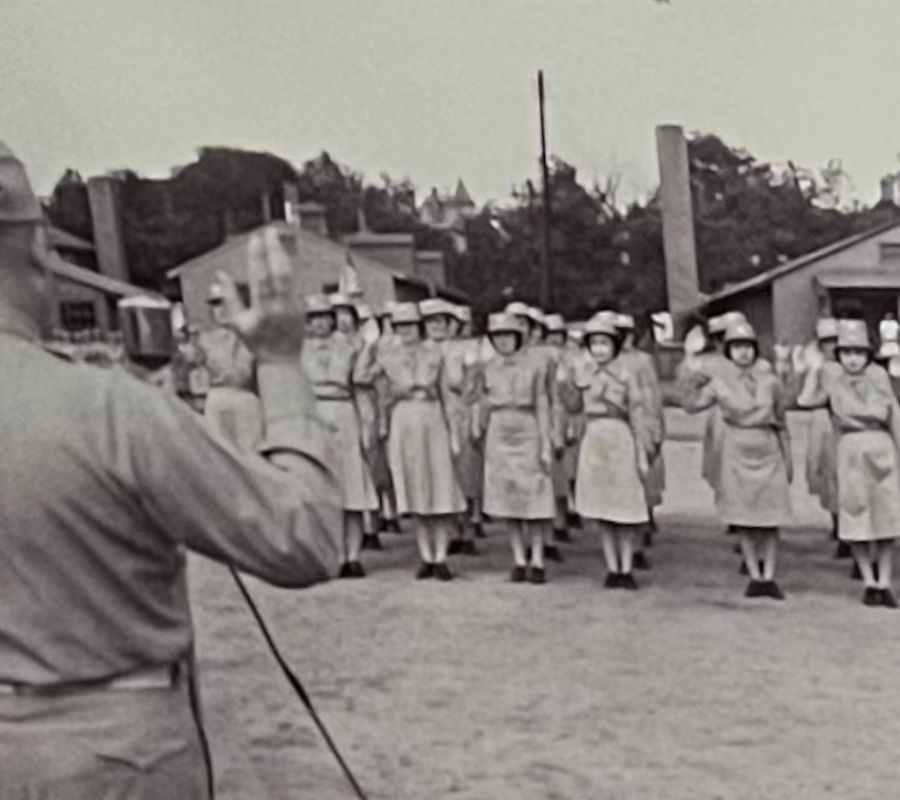 After training, the WAAC officer or enlisted person was assigned to a 150-woman table of organization company, which only had spaces for clerks, typists, drivers, cooks and unit cadre.
Women primarily worked in four fields: baking, clerical, driving, and medical.
Within one year of the WAAC establishment, over 400 jobs were open to women.
After training, the WAAC officer or enlisted person was assigned to a 150-woman table of organization company, which only had spaces for clerks, typists, drivers, cooks and unit cadre.
Women primarily worked in four fields: baking, clerical, driving, and medical.
Within one year of the WAAC establishment, over 400 jobs were open to women.
In January 1943, U.S. Rep. Edith Nourse Rogers of Massachusetts introduced identical bills in both houses of Congress to permit the enlistment and commissioning of women in the Army of the United States, or Reserve forces, as opposed to regular enlistments in the U.S. Army. This would drop the "auxiliary" status of the WAAC and allow women to serve overseas and "free a man to fight."
President Franklin D. Roosevelt signed the legislation on July 1, 1943, which changed the name of the Corps to the Women's Army Corps (WAC) and made it part of the Army of the United States. This gave women all of the rank, privileges, and benefits of their male counterparts.
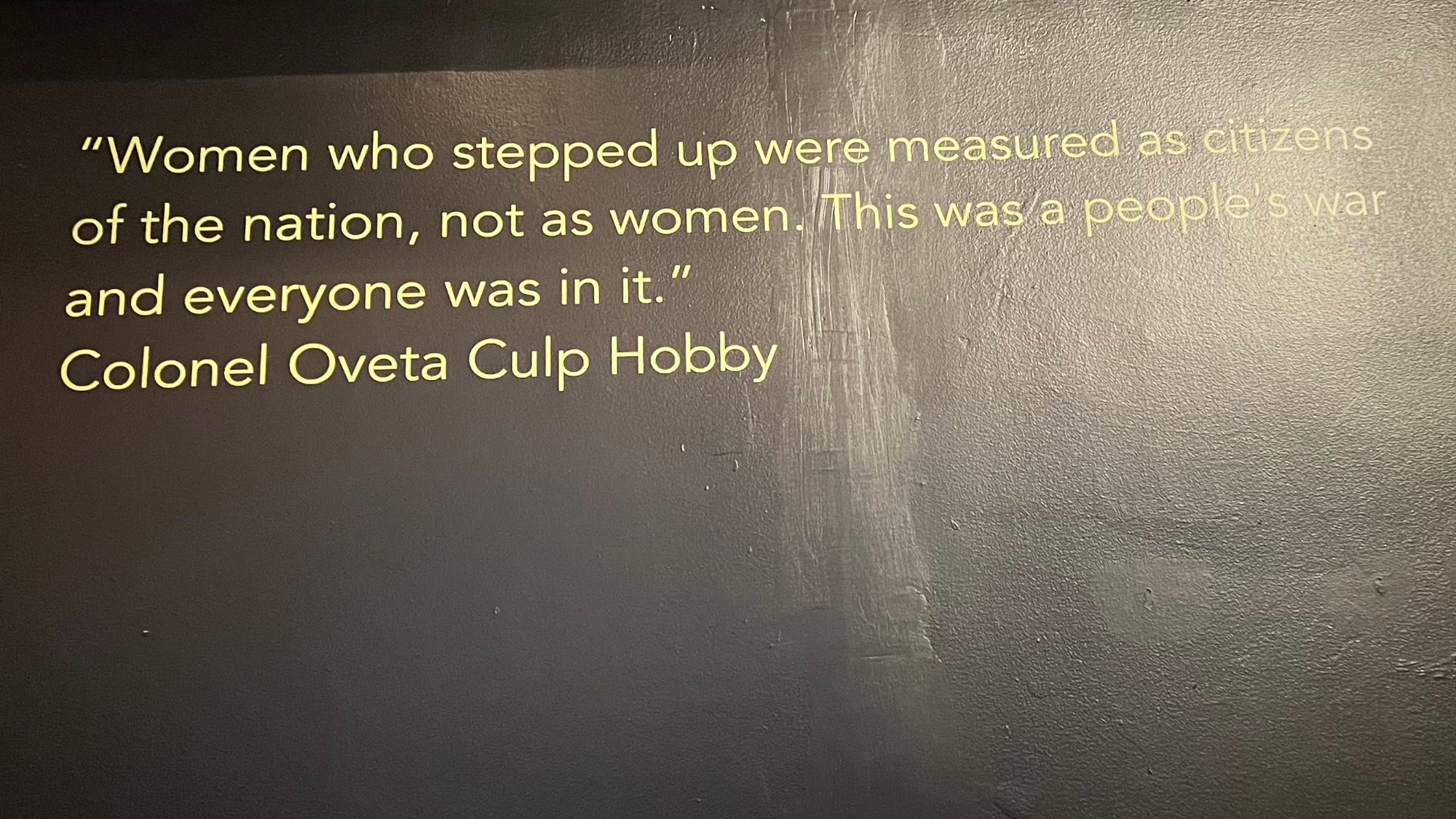
Women who stepped up were measured as citizens of the nation, not as women. This was a people's war and everyone was in it.

Join the WAC now!
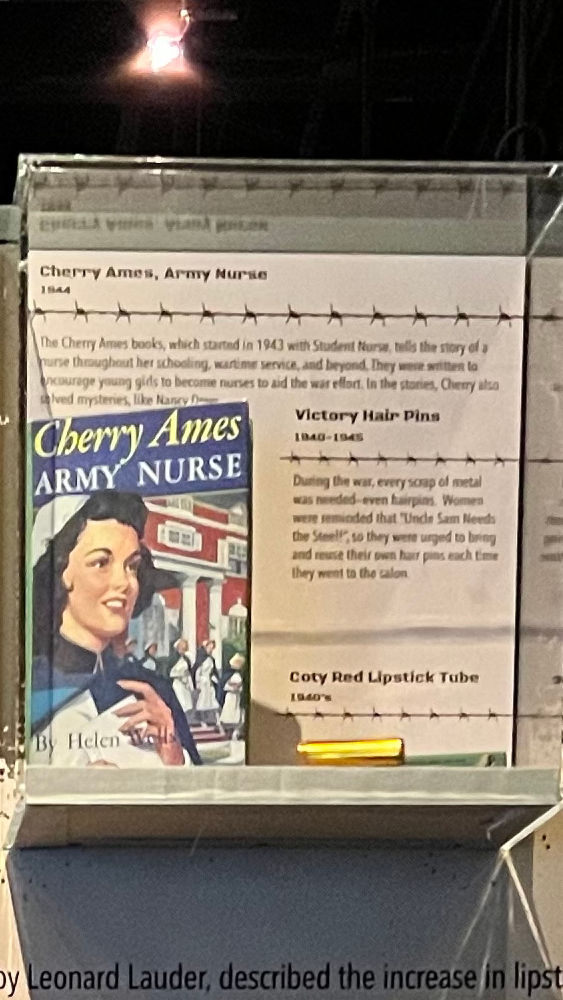
Army Nurse
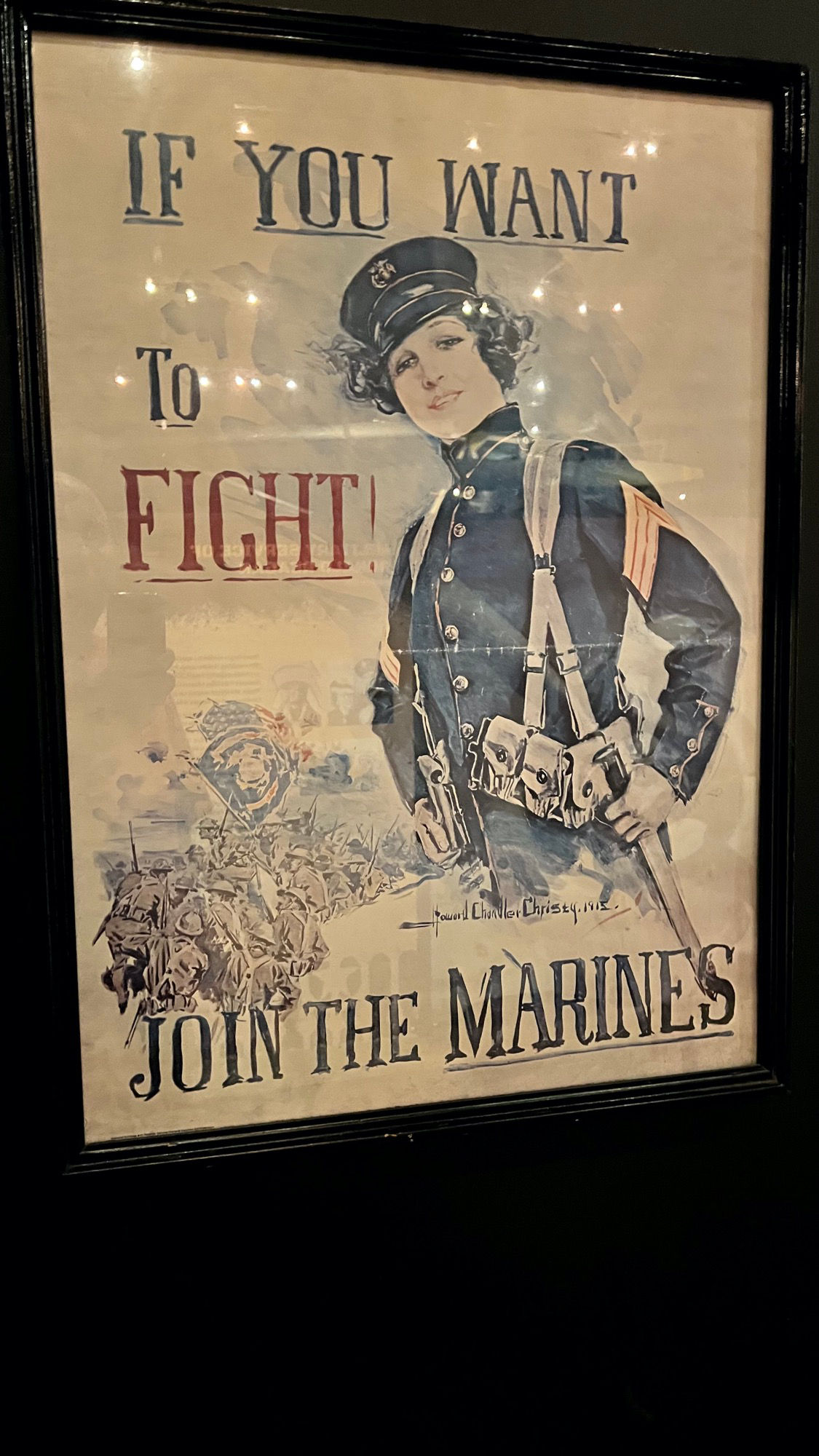
Join the Marines

Free a Marine to fight
US Marine Corps Women's Reserve
National Park ServiceWomen in the Military
Women have a long tradition of service in the United States armed forces. The names Margaret Corbin and Molly Pitcher of the Revolution are well known. Lucy Brewer served as a Marine on the USS Constitution, and Doctor Mary Walker was an Army surgeon during the Civil War. The accomplishments of the Army Nurse Corps, during the War with Spain, have been reported many times and World War I saw a Navy and Marine Corps Women's Reserve of over 13,000 women. Some women, like Lucy Brewer, served in the armed forces disguised as men but they were discharged as soon as their gender was revealed. It wasn't until World War II that women could serve as full-fledged members of the military force.On June 30, 1941 the U. S. War and Navy Departments employed more than 60,000 women to perform clerical, communications and support duties. After Pearl Harbor our government realized that it was essential that the women be under military control so they could be assigned where needed. The Army led the way when Congress created the Women's Army Auxiliary Corps on May 14, 1942. However, the corps was created as an auxiliary unit, so the women were limited to service with the Army instead of in the Army. In the fall, the Navy and Marines authorized their women full military status, but as members of the reserve component. The Greek Goddess of War Pallas Athene was selected to represent the Army's women.
Many news articles trivialize the women's contribution to the war. Off-color jokes and cartoons demeaned their competency and attacked their morals but official investigations revealed that the character, proficiency and dedication of the women was not only equal, but also superior that of the men. It was revealed that unlike the men, 68% of the women were high school graduates. Forty percent of the women grew up on a farm or came from small towns where the employment choices were limited. Ten percent were African-American. Many women erroneously believed that they would be eligible for the GI Bill, housing and education grants after the war. Although the women were restricted to non-combat roles, one hundred eighty-one women died in service and sixteen were awarded the Purple Heart. Sixty-six women were taken prisoner by Japanese forces and survived the ordeal of a concentration camp for four years.
Throughout the war there was public support for drafting women but the government was reluctant to take them away from defense plants and public service jobs. Magazine ads and recruiting posters enticed women to enlist with themes such as patriotism, duty and travel but they were unnecessary. By the end of the war almost 100,000 women joined the Army and were serving around the world. At peak strength 17,000 women were stationed in Europe and the Far East. Some recruiting drives had to be suspended when it was realized that they were attracting women from industry and agriculture.
On August 31, 1943 the Women's Army Auxiliary Corps of 60,000 was disbanded and the women dismissed from the service. The next day the newly formed Women's Army Corps enlisted those that chose to remain in service, and offered full military rank and benefits for service connected injuries. The new corps also provided protection for the women if captured by the enemy forces. As members of the auxiliary, the women would have been treated as civilians, but now they were soldiers and eligible for the rights afforded prisoners of war. Seventy-five percent of the WAAC enlisted in the WAC, but 15,000 chose to return to civilian life.
WIKIPEDIAThe Women's Army Corps (WAC)
was the women's branch of the United States Army. It was created as an auxiliary unit, the Women's Army Auxiliary Corps (WAAC) on 15 May 1942 and converted to an active duty status in the Army of the United States as the WAC on 1 July 1943. Its first director was Colonel Oveta Culp Hobby.The WAC was disbanded in 1978, and all units were integrated with male units.
The WAAC was modeled after comparable British units, especially the ATS, which caught the attention of Army Chief of Staff George C. Marshall. In 1942, the first contingent of 800 members of the Women's Army Auxiliary Corps began basic training at Fort Des Moines Provisional Army Officer Training School, Iowa. The women were fitted for uniforms, interviewed, assigned to companies and barracks and inoculated against disease during the first day.
The WAAC were first trained in three major specialties. The brightest and nimblest were trained as switchboard operators. Next came the mechanics, who had to have a high degree of mechanical aptitude and problem solving ability. The bakers were usually the lowest scoring recruits. This was later expanded to dozens of specialties like Postal Clerk, Driver, Stenographer, and Clerk-Typist. WAC armorers maintained and repaired small arms and heavy weapons that they were not allowed to use.
A physical training manual titled "You Must Be Fit" was published by the War Department in July 1943, aimed at bringing the women recruits to top physical standards. The manual begins by naming the responsibility of the women: "Your Job: To Replace Men. Be Ready To Take Over." It cited the commitment of women to the war effort in England, Russia, Germany and Japan, and emphasized that the WAC recruits must be physically able to take on any job assigned to them. The fitness manual was state-of-the-art for its day, with sections on warming up and progressive body-weight strength-building exercises for the arms, legs, stomach, neck and back. It included a section on designing a personal fitness routine after basic training and concluded with "The Army Way to Health and Added Attractiveness" with advice on skin care, make-up and hair styles.
General Douglas MacArthur called the WACs "my best soldiers", adding that they worked harder, complained less and were better disciplined than men. Many generals wanted more of them and proposed to draft women but it was realized that this "would provoke considerable public outcry and Congressional opposition", and so the War Department declined to take such a drastic step. Those 150,000 women who did serve released the equivalent of 7 divisions of men for combat. Gen. Dwight D. Eisenhower said that "their contributions in efficiency, skill, spirit and determination are immeasurable".
During the same time period, other branches of the U.S. military had similar women's units including: the Navy's WAVES, the SPARS of the Coast Guard, United States Marine Corps Women's Reserve, and the (civil) Women Airforce Service Pilots. The British Armed Forces also had similar units including: the Women's Royal Naval Service ("WRENS"), the Auxiliary Territorial Service. and the Women's Auxiliary Air Force.








